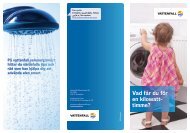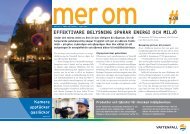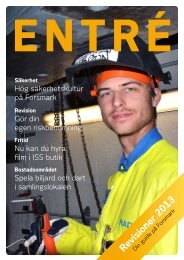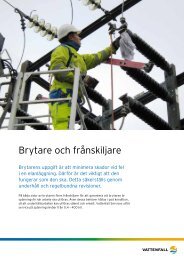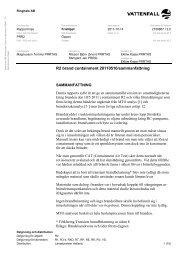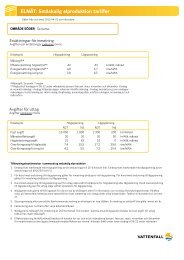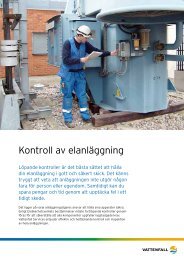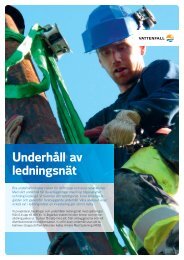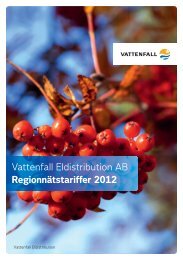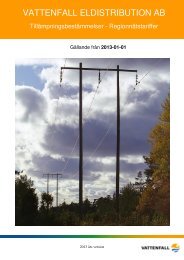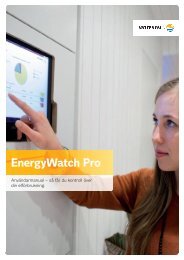Offshore Cable Installation - Lillgrund - Vattenfall
Offshore Cable Installation - Lillgrund - Vattenfall
Offshore Cable Installation - Lillgrund - Vattenfall
Create successful ePaper yourself
Turn your PDF publications into a flip-book with our unique Google optimized e-Paper software.
7 COMMENTS AND CONCLUSIONS<br />
The cable installation process was complex and an important step for <strong>Vattenfall</strong> AB,<br />
considering the limited experiences previous to <strong>Lillgrund</strong> of building offshore wind farms.<br />
7.1 Weather dependent operation<br />
The cable installation is very dependant on weather conditions. The longer time the<br />
installation is predicted to take, the more important is it to choose the right season. In<br />
<strong>Lillgrund</strong>, for example, the export cable was scheduled to be installed in October but first<br />
attempts were postponed until December due to poor weather conditions.<br />
In conclusion, it is recommended to schedule the cable installation work during statistically<br />
good weather seasons, attempting to avoid winter by a comfortable margin.<br />
7.2 Method<br />
The method of excavating the trenches first and then coming back to lay the cable weeks<br />
later worked well for the installation of the inter-array cables. However, the export cable<br />
was only installed correctly after many setbacks.<br />
Sweden and Denmark do not share the same diving regulations. Sweden allows diving<br />
from a moving ship and Denmark requires the ship to have its spuds down and the engines<br />
turned off. This was confusing for the Danish crew in the beginning of the installations.<br />
In <strong>Lillgrund</strong>, the seabed soil profile consisted of mainly very stiff bolder clay. The clay was<br />
advantageous for excavation because of its stiffness and allowed the trench to have almost<br />
vertical walls. It also allowed the excavated material to remain close to the trench during<br />
the backfilling. In the few areas where the seabed was not as stiff, a pre-lay excavation<br />
was necessary.<br />
Another advantage of the stiff bolder clay was that very few particles of the material<br />
followed the water currents during the excavation. In areas with soft seabed material, and<br />
at areas with a depth less than 3 - 5 meters, seabed material was clouding the water by the<br />
thrusters on the cable ship.<br />
7.3 Environmental impact of the installation operation<br />
The environment is affected by the installation both during the excavation and during the<br />
cable laying. During the excavation, small particles from the clay followed the water<br />
currents and, depending on how strong the current was, the particle cloud could be<br />
hundreds of meters in length. A supervisor for the authorities notified the operators that this<br />
was a problem early in the excavation, and was quickly addressed by limiting the height of<br />
the bucket over the seabed.<br />
29 (30)




